#12 - Painting Like an Engineer
Last week, I sent out a SneakyArt Drop with a short introduction to haiku. This week I start a haiku chain and invite you to participate. Also, I introduce the latest episode of the SneakyArt Podcast. Enjoy.
Painting like an Engineer with Uma Kelkar
I am fascinated by people who make art but are not otherwise trained or full-time artists. The hobbyist, or enthusiast, is in some ways more interesting than the dedicated artist. Their reasons to make art are not as ordinary as natural talent or as boring as childhood skill. It is a conscious decision to invest precious leisure time. They often have strong, clear motivations for doing so.
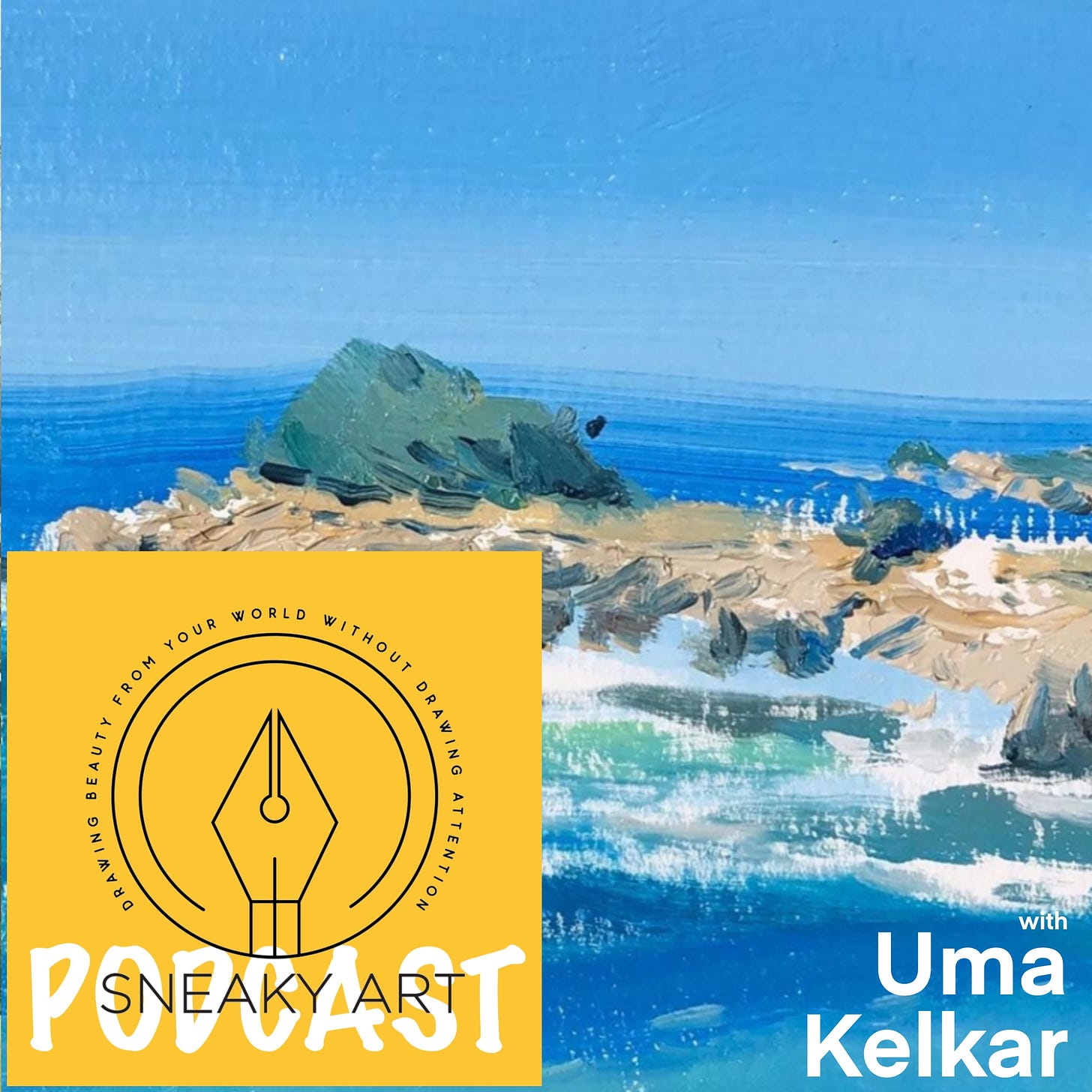
In this episode, I speak with Silicon Valley engineer and artist Uma Kelkar, about what it means to "paint like an engineer". We speak about Uma's education, growing up middle-class in Pune (India), and the role art has played in her life. Uma uses her art as a way to find emotional contentment while pursuing creative goals. Painting like an engineer is a challenge to balance artistic pursuits with a scientific career, in a way that each informs and influences the other.


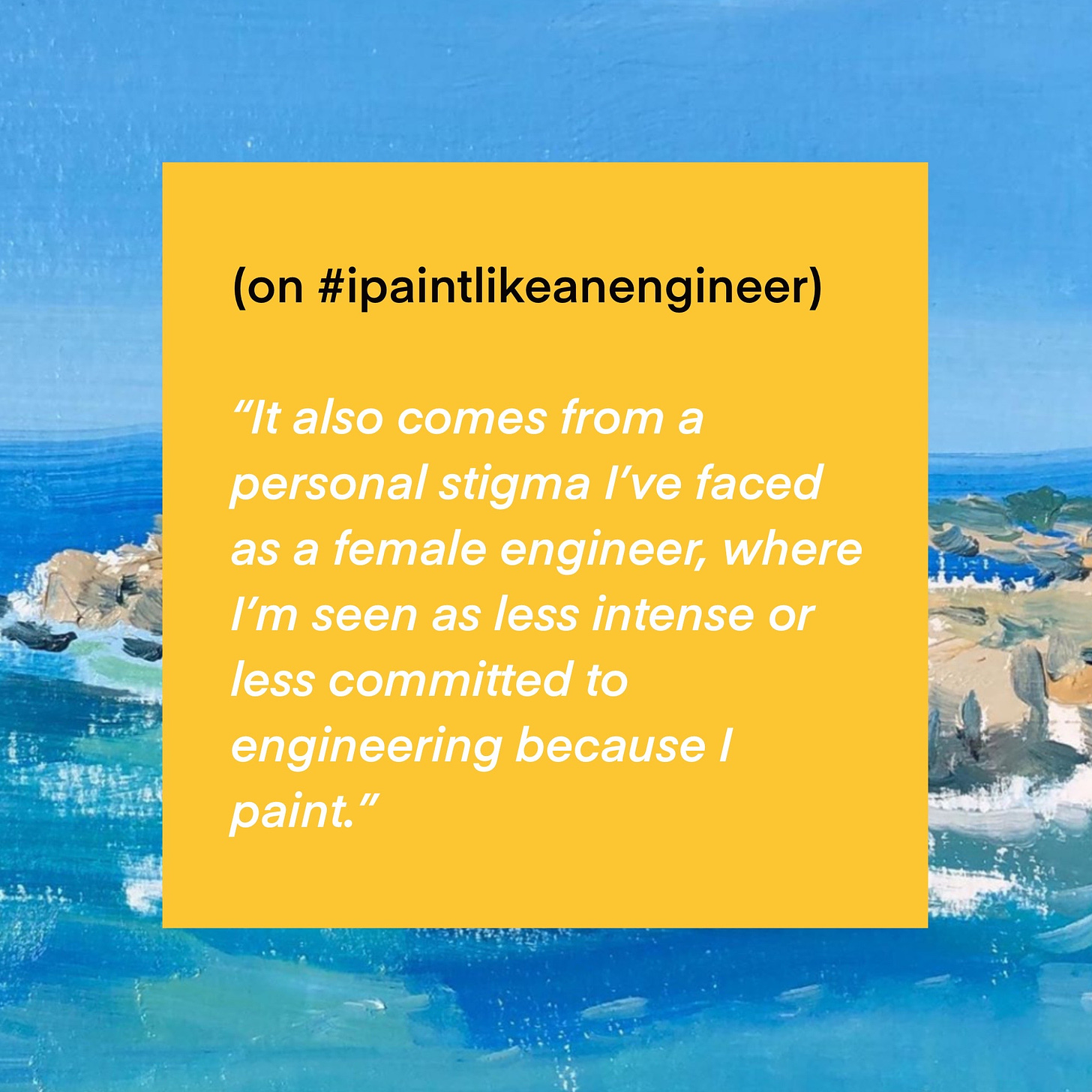
I learned a lot from this conversation, and spoke more than I usually do because Uma had so many questions for me as well. I hope you enjoy listening to it!
Spotify || Apple || Web Browser
Check out Uma’s art and give her a follow on Instagram.
Previous episodes of the podcast have been well received and I’m delighted with the response. It is both amazing and humbling that it is enjoyed by people in different parts of the world. If you have not heard it yet, here’s a recap of the past episodes.
In Ep2 - Drawing Lines with Paul Heaston, I spoke to the artist about his background in oil painting, and how he came to prefer a little sketchbook over a large canvas.
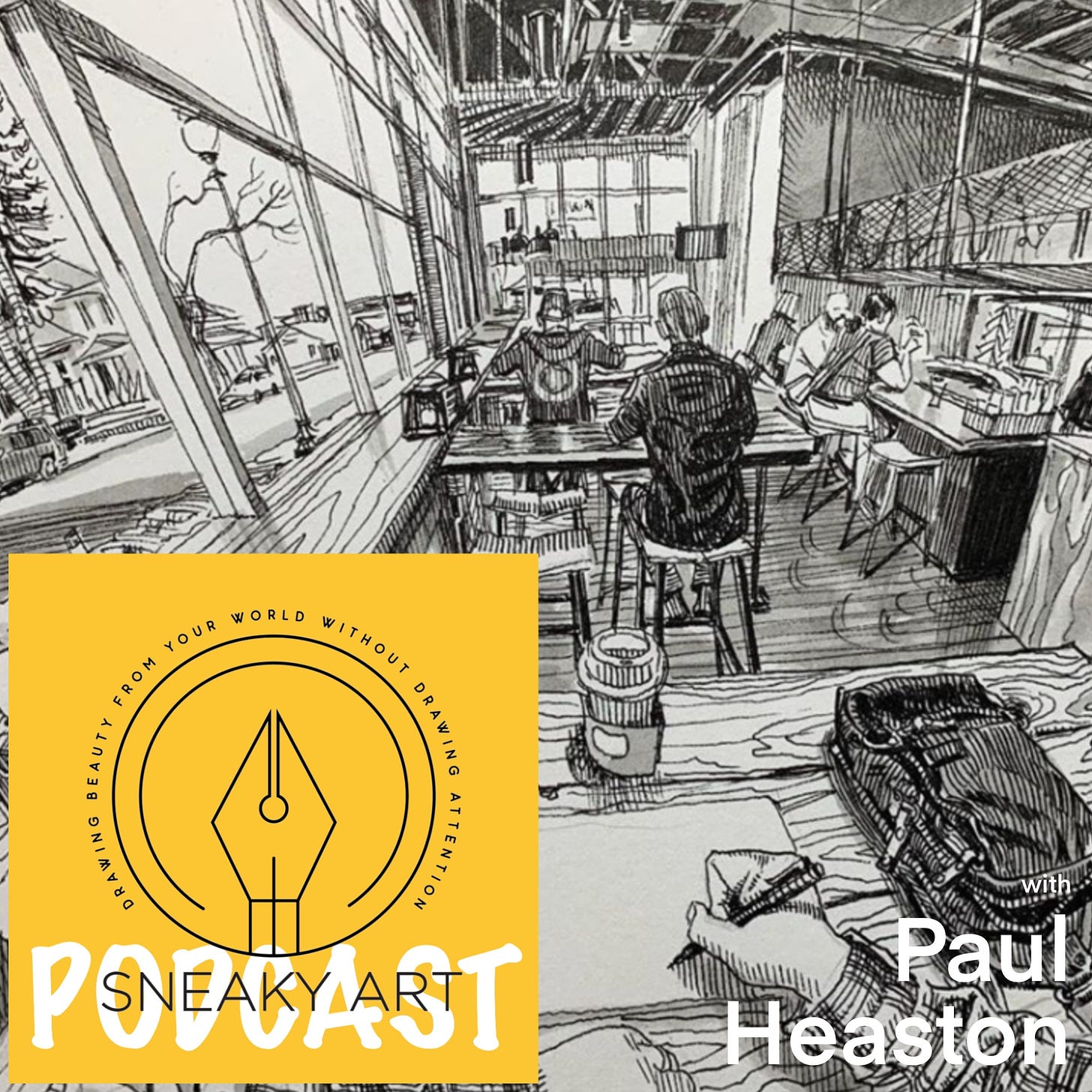
In Ep3 - Seeing in Color with Shari Blaukopf, I asked the artist about different ways to see and understand color, and what she means by “seeing is as important as drawing”.
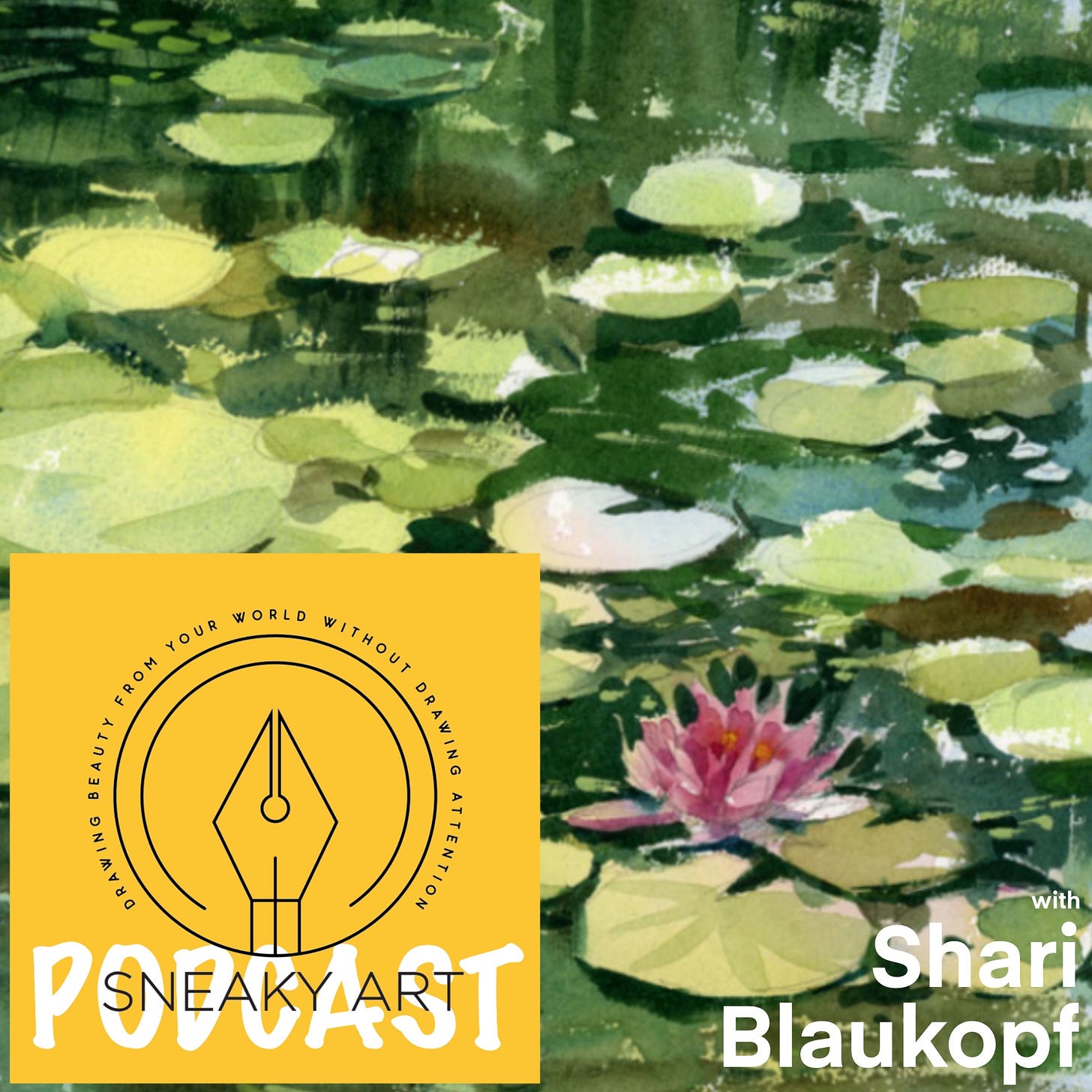
Haiku Chain
A haiku is a traditional Japanese three-line poem. In its modern form it has no rules except a syllable count of 5-7-5. Haiku poems focus on emphasizing vivid imagery inside a brief moment, almost as if to compensate for their brevity. Within the confines of their tight form, they offer a sudden moment of enlightenment, a spark of realization!
"The image itself is speech. The image is the word beyond formulated language." - Ezra Pound
A haiku-chain begins with the last line of one haiku taken as the first line of the next. You can do it as a solitary exercise, but it is even more fun with other people.
Take these sunflowers. They were gifted last week by friends. Try as we did, we could not make them face the sun in the western sky. Why? Could it be because Summer is giving way to Fall?
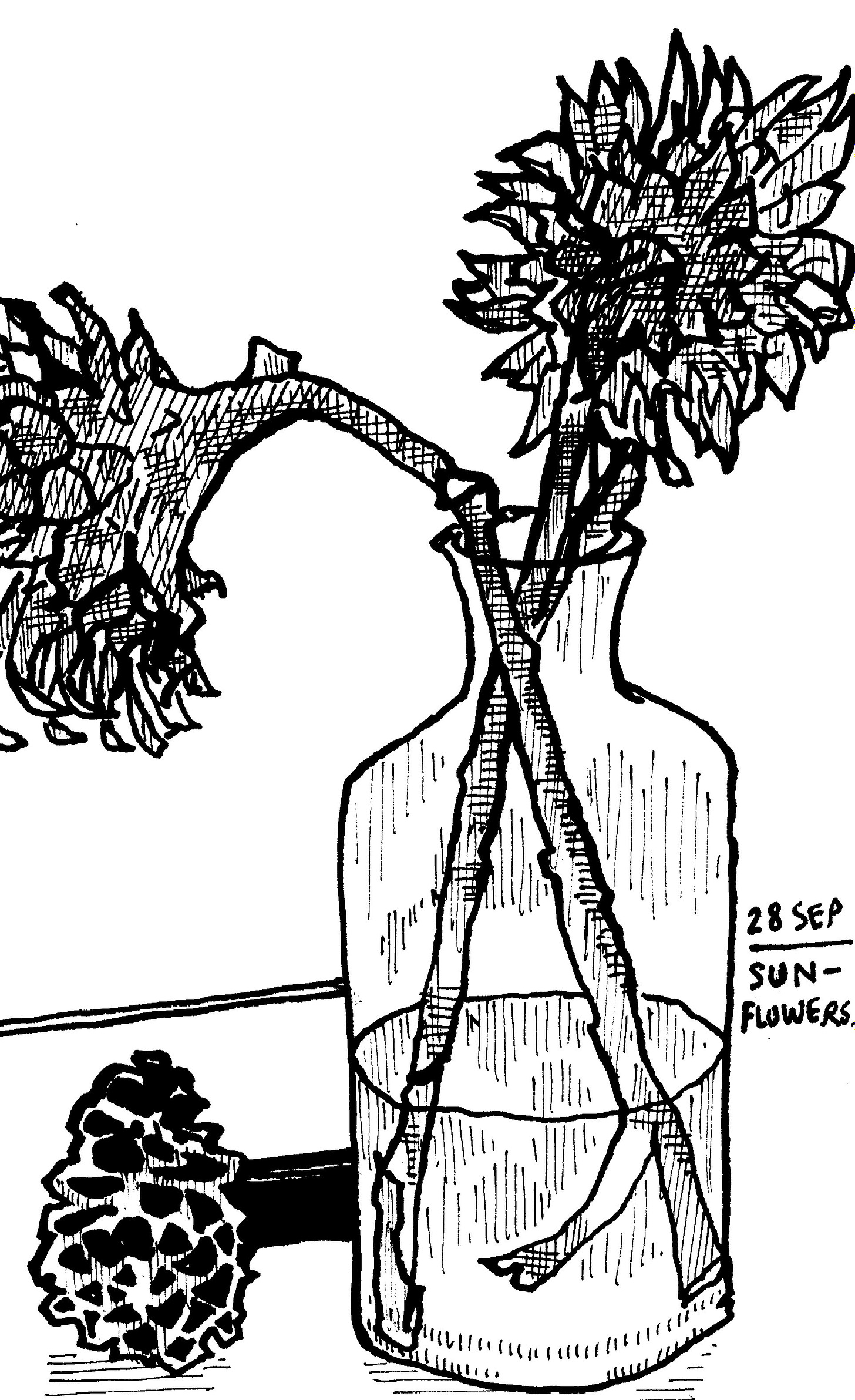
Sunflower at sunset,
Looking away from the sky -
In disappointment?
In disappointment,
For days were longer last week.
But, I did not look.
But I did not look
And then suddenly it’s gone -
And then there is loss.
To participate in the haiku-chain, reply to this email with your own haiku. The first line should be - And then there is loss. You can thematically continue from where my poem ends, or choose your own expression.
The changing of seasons always evokes in me a sense of loss. In Chicago, you can see the changes around you. The leaves gradually change color and the morning temperatures fall. The wind is no longer refreshing; first it is bracing, then it becomes bitter, then biting. In a matter of weeks, the gifts of summer will all be gone.
At this time I think of a loss from early lockdown.
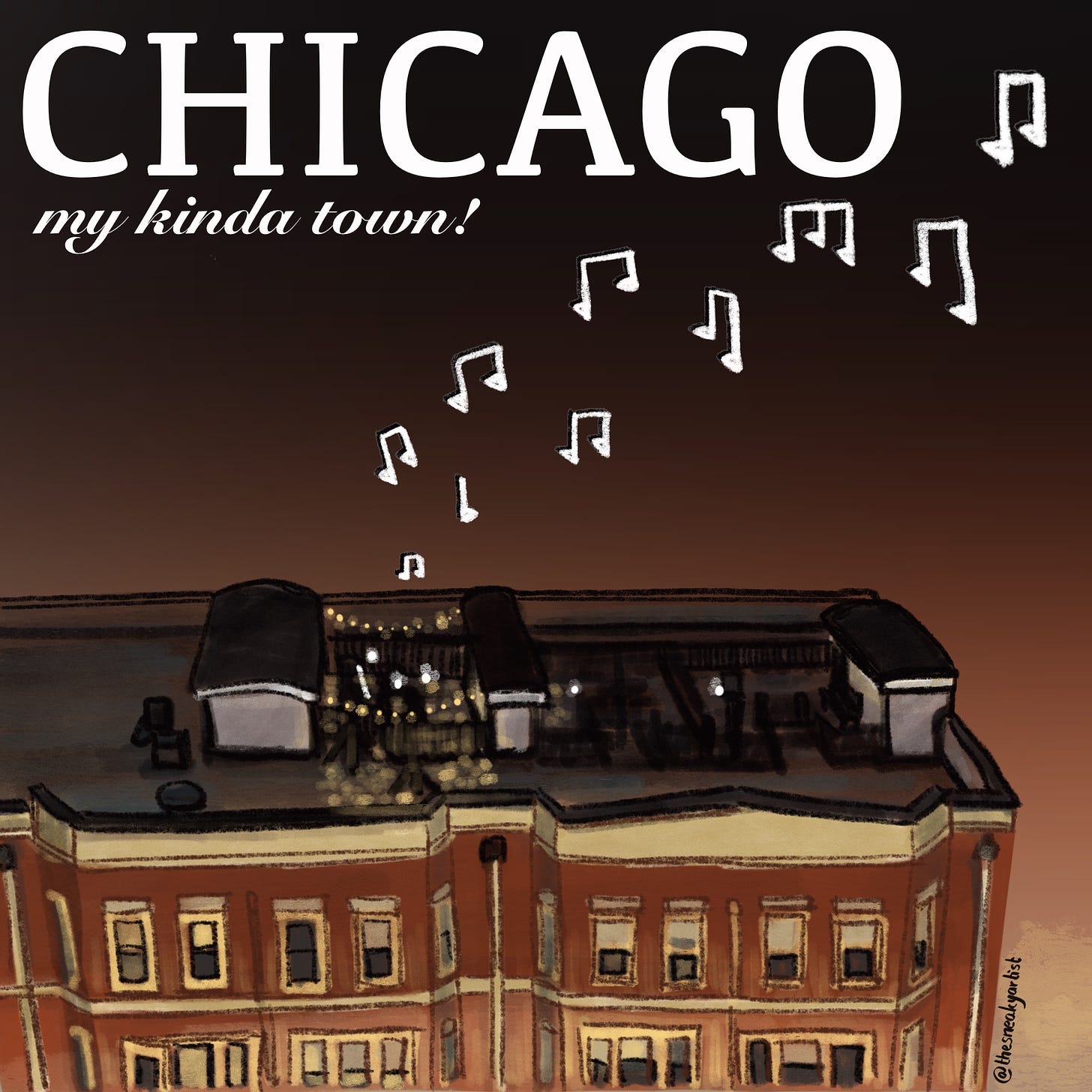
At 8pm, a local radio station would play songs on request, and the South Loop neighborhood would come out to sing, clap and dance from their balconies. You could hear it for several blocks around. It was on local TV. We would wave to each other, grin foolishly at this semblance of human connection, and feel united in our isolation. It continued this way for a couple of months. Then quite suddenly it was over. For everyone’s best interests, the economy had reopened.
Now it seems almost unreal that this happened. Summer brought its own distractions, and quite soon we forgot the things of March and April and May. Many times I heard the music from my neighbor’s speakers. I knew that they would be dancing on their terrace. But I was too lazy or distracted to join them at the balcony. Now it is gone forever.
So it goes.
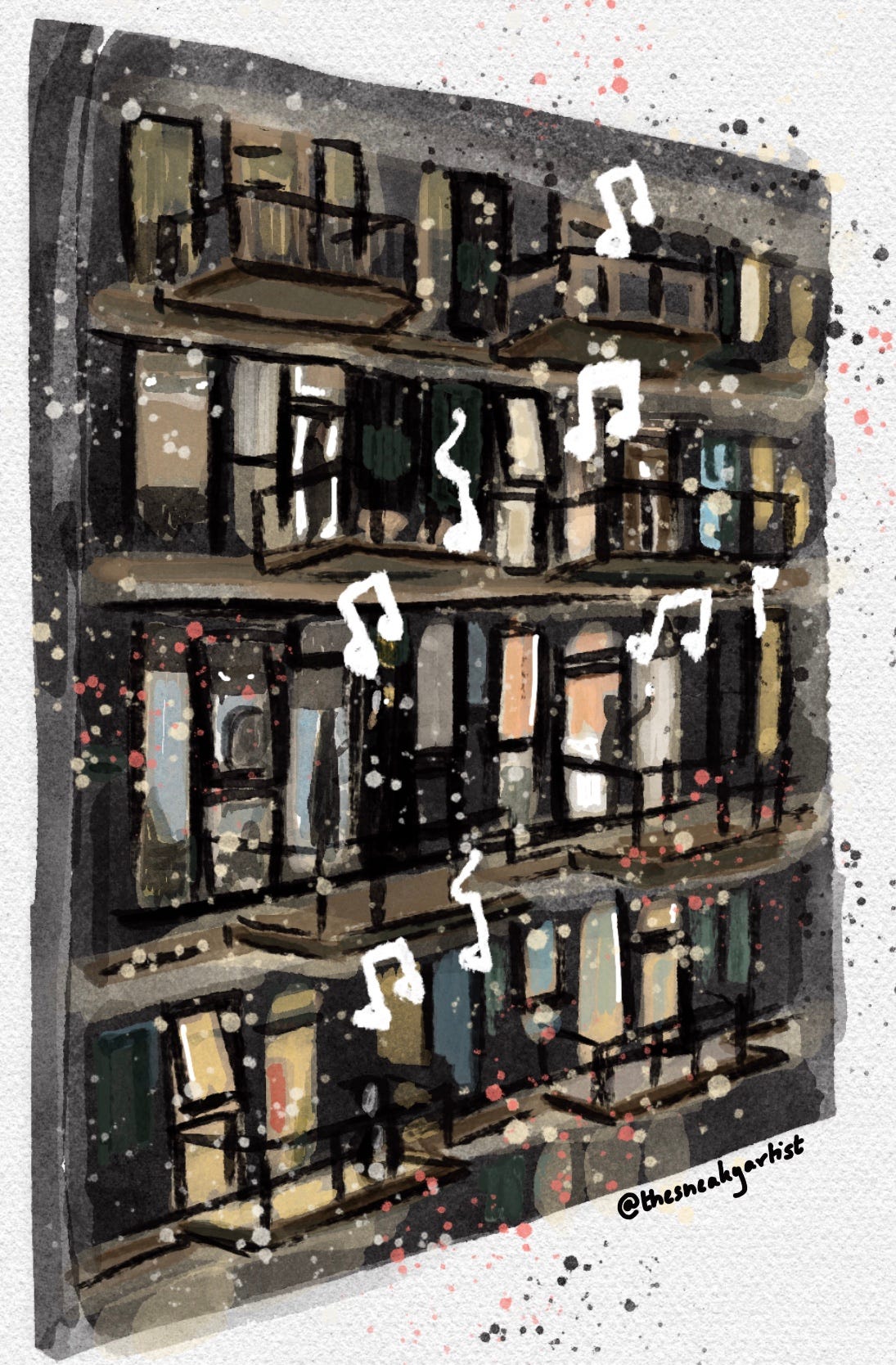
Thank you for reading this issue of the SneakyArt Post. I hope you try to write some haiku. (Remember it’s just three lines!)
Next week, I will share videos of a couple of recent commissions, where I draw scenes from Chicago and Kolkata with ink.
I will display a large collection of prints, starting next week, at the Gallery Cafe in Chicago. If you’re in the city, drop by!



